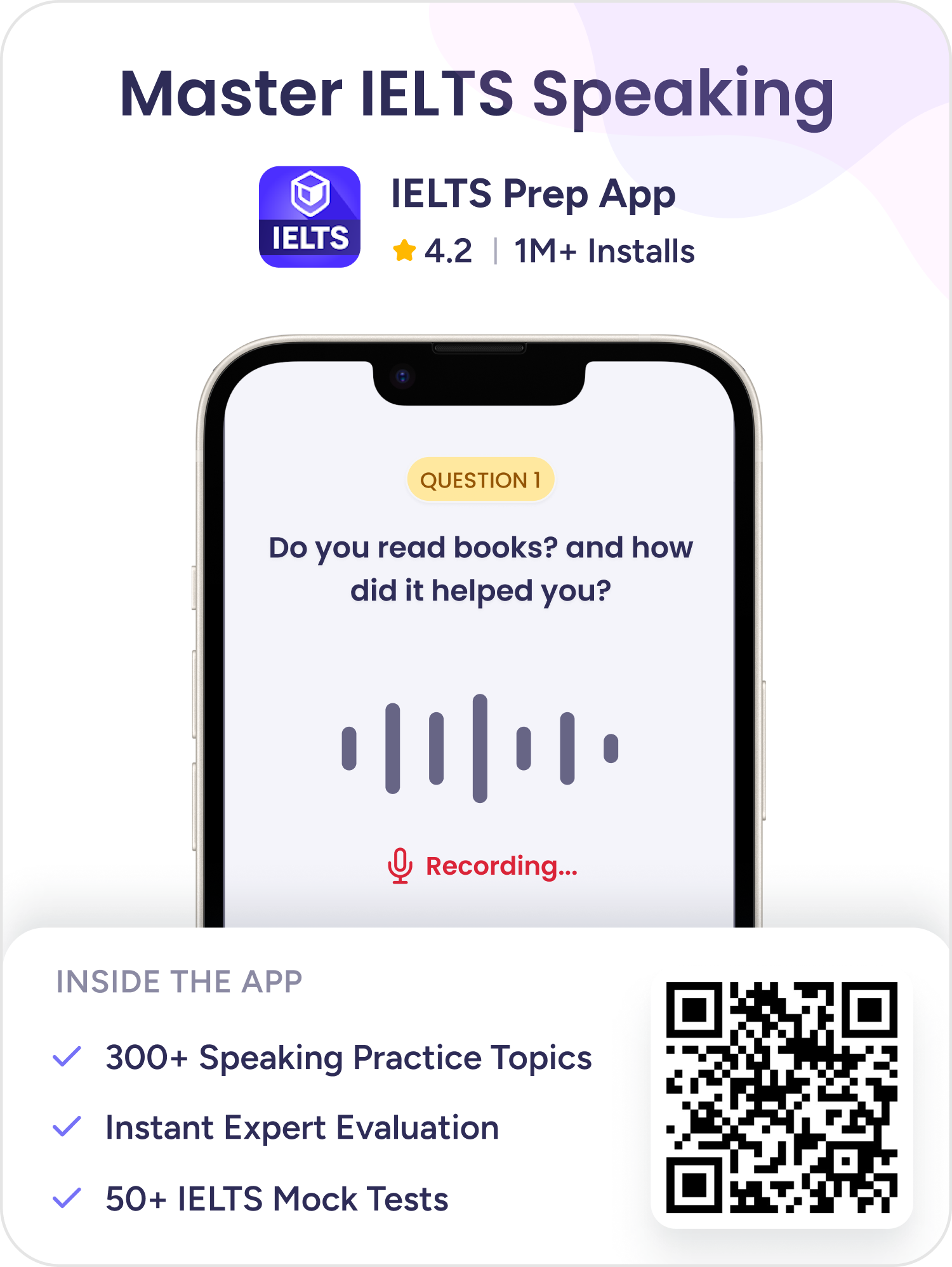Describe A Travel You Were Looking Forward To But Was Delayed: IELTS Speaking Cue Card
You should say
- Where were you going?
- Why was it important for you?
- Why was it delayed?
- What happened in the end?
42 unique answers with expert feedback
Band >7
00:00
/
00:00
Follow up questions
Follow up questions
What other places have you traveled to before this trip?
How did you feel when you learned about the delays?
What did you learn from this travel experience?
Band 7
00:00
/
00:00
Follow up questions
Follow up questions
What specific aspects of Japanese culture are you most interested in?
How did you feel when you had to postpone your trip?
What did you do while waiting for your rescheduled trip?
Band 6-7
00:00
/
00:00
Follow up questions
Follow up questions
What did you do to prepare for your trip to Bangalore after rescheduling?
How did you feel when you finally went on the trip after the delay?
What was your favorite part of the trip to Bangalore?
Practice other cue cards
Band 6-7
00:00
/
00:00
Follow up questions
Follow up questions
What were your expectations for the trip to Rajasthan?
How did you feel when the trip was initially canceled?
What was the highlight of your trip to Rajasthan?
Band 6-7
00:00
/
00:00
Follow up questions
Follow up questions
What specific activities were you looking forward to in Kullu Manali?
How did you feel when your travel plans were delayed?
What did you do during the delay to keep your travel spirit alive?
Cue 1:Where were you going?
- Begin by mentioning the destination you were excited to visit.
- Include details about what attracted you to this place, such as its culture, scenery, or activities.
Example
I was looking forward to visiting Goa, a beautiful coastal state in India known for its stunning beaches and vibrant nightlife. I had planned this trip for months because I wanted to relax by the sea and experience the famous Goan culture.
Cue 2:Why was it important for you?
- Explain the personal significance of this trip, such as a special occasion or a much-needed break.
- Share your feelings about the anticipation and excitement leading up to the trip.
Example
This trip was particularly important for me because it was my first vacation after a long year of working hard at my job. I was feeling quite stressed, and I believed that a few days in Goa would help me recharge and enjoy some quality time with my friends.
Cue 3:Why was it delayed?
- Describe the reason for the delay, whether it was due to external factors like weather or personal circumstances.
- Make sure to convey your disappointment and how it affected your plans.
Example
Unfortunately, my trip was delayed because of unexpected heavy rains in Goa. The weather forecast predicted a storm, and my flight was canceled just a day before we were supposed to leave. I felt really disappointed as I had been looking forward to this getaway.
Cue 4:What happened in the end?
- Discuss how you handled the situation and whether you were able to reschedule your trip.
- Share any positive outcomes or lessons learned from the experience.
Example
In the end, I managed to reschedule my trip for the following month. Although I was initially upset, it turned out to be a blessing in disguise as the weather was perfect during the new dates. I had an amazing time in Goa, and it was worth the wait!
Conclusion
Example
Overall, while the delay was frustrating, it taught me the importance of patience and flexibility in travel plans. Sometimes, things don’t go as expected, but they can still turn out wonderfully in the end.
Following this structure will ensure you cover all the essential points while providing a clear and engaging response to the cue card topic.
Tips to answer this Cue Card
1: Lack of Detail in Description
Candidates often provide vague answers without enough detail. This can make the response less engaging and informative, leading to a lower score.
Tip
Include specific details about the destination, your feelings, and the significance of the trip to make your answer more vivid and interesting.
2: Ignoring the Delay Reasons
Some candidates forget to explain why the trip was delayed, which is a key part of the cue card. Omitting this can leave the answer incomplete.
Tip
Clearly explain the reasons for the delay, whether it was due to weather, personal issues, or other factors, to provide a full picture.
Rushing Through the Conclusion
Many candidates rush their conclusion, failing to summarize what happened in the end. This can leave the listener unsatisfied.
Tip
Take a moment to reflect on the outcome of the trip and share any lessons learned or feelings about the experience to wrap up your answer effectively.
IELTS Cue Cards asked last week
Reported by Leap students who gave IELTS
All Answers
Here are all the answers by real-users practicing speaking for IELTS Cue Cards on our IELTS Prep App.
Band >7
Band 7
Band 6-7
Band 6-7
Band 6-7
Band 6-7
Band 6-7
Band 6-7
Band 6-7
Band 6-7

Explore
473 Cue Cards

Personal Experience
121 Cue Cards

Describing People
66 Cue Cards

Travel
47 Cue Cards

Personal Development
45 Cue Cards

Hobbies/Interests
44 Cue Cards
Environment/Culture
39 Cue Cards

Tech/Media
27 Cue Cards

Education/Work
19 Cue Cards

Social Issues
19 Cue Cards

Describe An Object
16 Cue Cards
Business/Shopping
16 Cue Cards

Food/Cooking
8 Cue Cards
Fashion
6 Cue Cards
Get the IELTS Prep App
4.2
1M+ Installs
Get the IELTS Prep App
4.2
1M+ Installs
Get the app link on your phone
Or download app from





